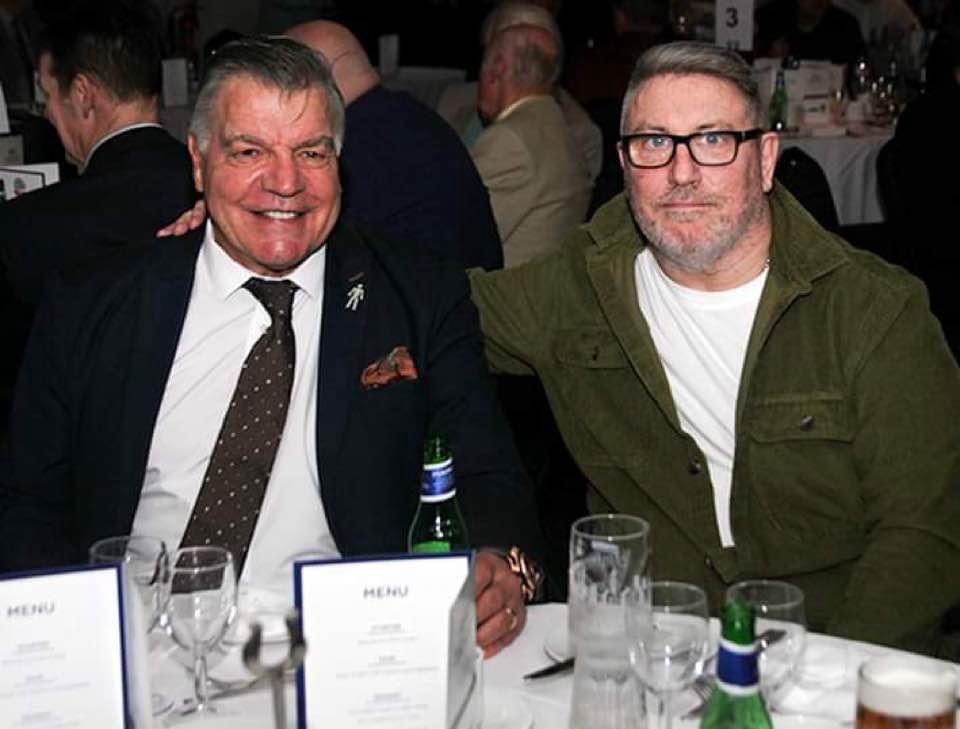Rugby must evolve before more players pay the price
Roy Heaney, former rugby league player
| Rylands Garth
For the first 21 years of my life, everything I did revolved around becoming a professional football player. As a teenager, I was living the dream - on a fast track to play for my boyhood club Liverpool and training with legends of the game daily.
That changed when my career in football was cruelly snatched away by a leg break and a series of knee injuries. Making the switch to rugby league offered me a lifeline. It gave me a second chance when I thought I would have to retire. Most importantly, it gave me back the feeling of purpose I had lost after so many setbacks.
 Sam Allardyce (left), former England football manager, and Roy Heaney
Sam Allardyce (left), former England football manager, and Roy Heaney
What I didn’t know at the time is what rugby was also taking from me. After a career of head knocks, dizzy spells and other symptoms that were consistently brushed aside by club doctors, coaches and physios, I was diagnosed with early-onset dementia and probable chronic traumatic encephalopathy (CTE). CTE is a degenerative brain condition that affects mood, personality and behaviour, and is strongly linked to playing collision sports. In that moment my life changed forever.
Concussion is not just a momentary setback. It can’t be treated with smelling salts and a splash of water to the face. For many players - whether elite or amateur - it can have severe and lasting consequences. From cognitive decline to emotional struggles, migraines to memory loss, the damage caused by concussion and repeated brain injuries can be lifelong and devastating.
I know this firsthand. Throughout my career, I took my fair share of hits to the brain. I remember playing in numerous games when I received a concussion that left me dazed and seeing stars. I would ask the club physio to come off, but like many players, I was encouraged to shake it off and keep playing. The pressure to perform and the expectation to be tough meant every time I was asked to go back onto the pitch, I did, even when I was in no fit state to do so.
As players, we trust our clubs to have our best interests at heart. However, after decades of what we allege to be negligence and abuse of safety guidelines and concussion protocols at every level of governance, there is now a crisis affecting the entire sport.
I joined the legal case against the RFL, which now involves approximately 270 fellow former league players (and over 700 in rugby union), because I believe they must be held accountable for the damage done to me and countless others. We allege they knew the risks but chose to ignore them, and therefore failed in their duty of care to us. Rugby league can and must do better to protect players, and there are concrete steps that the governing bodies should take to do so.
I am aware that since the litigation started the RFL have made significant changes to the sport. These are helpful but they do not go far enough to make the game safer for current and future generations.
Mandatory limits on contact in training
People often assume the biggest risk of concussions comes from games. What often gets overlooked is the significant brain trauma that happens in training. On several occasions, I was knocked unconscious during training drills and received no aftercare before returning for the next game. Limiting full-contact sessions and introducing strict guidelines around tackling and other contact drills could significantly reduce the cumulative impact on players. The NFL took steps in this direction a generation ago - rugby must follow suit.
Stronger independent concussion protocols
Rugby league continues to rely on guidance from the much maligned Concussion in Sports Group (CISG), co-founded by Dr Paul McCrory and comprising of many academics and clinicians in pay of the sport. McCrory was forced to resign from CISG in 2022 due to multiple counts of plagiarism and subverting the science on concussion. This led to him being labelled an academic fraud by The Times and having multiple papers pulled from the British Journal of Sports Medicine.
An independent concussion ombudsman must be created to oversee the direction of brain welfare in contact and collision sports. This must include the education and appointment of independent medical advisers. Crucially, players who suffer from concussions must be sidelined for a mandatory minimum period of 28 days. The decision needs to be taken out of the hands of players and clubs who are often blinkered in the moment by a desire to win at all costs.
Overhaul of head injury assessments
Rugby’s head injury assessment process (HIA) is not fit for purpose. For a generation, concussion experts and rugby safety campaigners have highlighted the numerous flaws in this system, to little avail. Players rarely receive an HIA unless they insist on one, and, even then, are often cleared despite remaining symptomatic. The system must be replaced with one that prioritises player safety over returning to the field of play as soon as possible.
Rugby league is a contact sport, and nobody is calling for that to be taken out of the game. But this shouldn’t come at the cost of players’ futures. Our beloved sport has already evolved in so many ways, from tactics to training to technology. Now, the government must hold rugby’s lawmakers accountable to ensure it evolves to better protect players. Otherwise, participation will keep dropping and parents will continue to block their children from playing. Without a major change, we risk losing the sport we love entirely.
